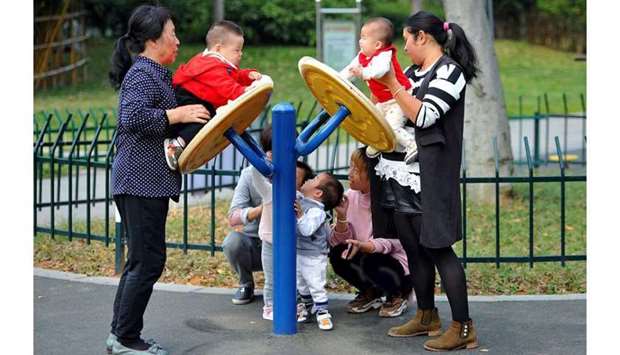China’s population grew at its slowest in the last decade since the 1950s as births declined, sowing doubt over Beijing’s ability to power its economy as it succumbs to the same ageing trends afflicting developed nations like Japan.
With growth having ebbed ever since a one-child policy was introduced in the late 1970s, the 2020 results of the country’s once-a-decade census yesterday showed the population of mainland China increased 5.38% to 1.41bn. That was the least since modern census-taking began in 1953.
Data showed a fertility rate of 1.3 children per woman for 2020 alone, on par with ageing societies like Japan and Italy.
The shrill alarm for China’s policymakers is that the world’s second-biggest economy may already be in irreversible population decline without having first accumulated the household wealth of G7 nations.
The number meant China narrowly missed a target it set in 2016 to boost its population to about 1.42bn by 2020, with a fertility rate of around 1.8.
In 2016, China replaced its one-child policy — initially imposed to halt a population explosion at the time — with a two-child limit.
The sharp deterioration in demographics will fuel pressure on Beijing to ramp up incentives to couples to have more children — incentives that have thus far failed to offset the impact of career choices and cost-of-living challenges that couples say have deterred them from starting extended families.
Analysts said that with substantial ageing of the population already in view, the census numbers will also give ammunition to policymakers arguing in favour of raising the country’s retirement age sooner than later.
“From the trend of population development in recent years, the population growth will continue to slow in the future,” said Ning Jizhe, head of the National Bureau of Statistics, speaking after the release of the census results.
“China’s population will reach a peak in the future, but the specific time is still uncertain. It is estimated that China’s total population will remain at more than 1.4bn in the near future,” Ning said.
In recent months, China’s state media has been increasingly bleak on the outlook, saying the population may start to shrink in the next few years.
The United Nations predicts the number of people living in mainland China will peak in 2030 before declining.
But in late April, the Financial Times newspaper said the population actually fell in 2020 from a year earlier, citing unidentified people familiar with the matter.
The 2020 number in the nationwide census was actually slightly higher than the 1.4005bn in 2019 estimated in a smaller official survey published in February last year.
One bright spot in the data was an unexpected increase in the proportion of young people — 17.95% of the population was 14 or younger in 2020, compared with 16.6% in 2010.
From 2016 to 2019, the annual birth rate mostly declined with the exception of 2016.
Last year, China recorded 12mn births, Ning said, sharply down from 14.65mn in 2019 and the lowest since 1961.
“It doesn’t take published census data to determine that China is facing a massive drop in births,” said Huang Wenzheng, a demography expert at the Center for China and Globalisation, a Beijing-based think-tank.
Even if China’s population didn’t decline in 2020, the expert said, “It will in 2021 or 2022, or very soon.” Urban couples, particularly those born after 1990, tend to value their independence and careers more than raising a family despite parental pressure to have children. Surging living costs in big cities, where most Chinese now live, have also deterred couples from having children. According to a 2005 report by a state think-tank, it cost 490,000 yuan ($74,838) for an ordinary family in China to raise a child.
By 2020, local media reported that the cost had risen to as high as 1.99mn yuan — four times the 2005 number.

Women play with children at a park in Jinhua, Zhejiang province, China. (Reuters)


